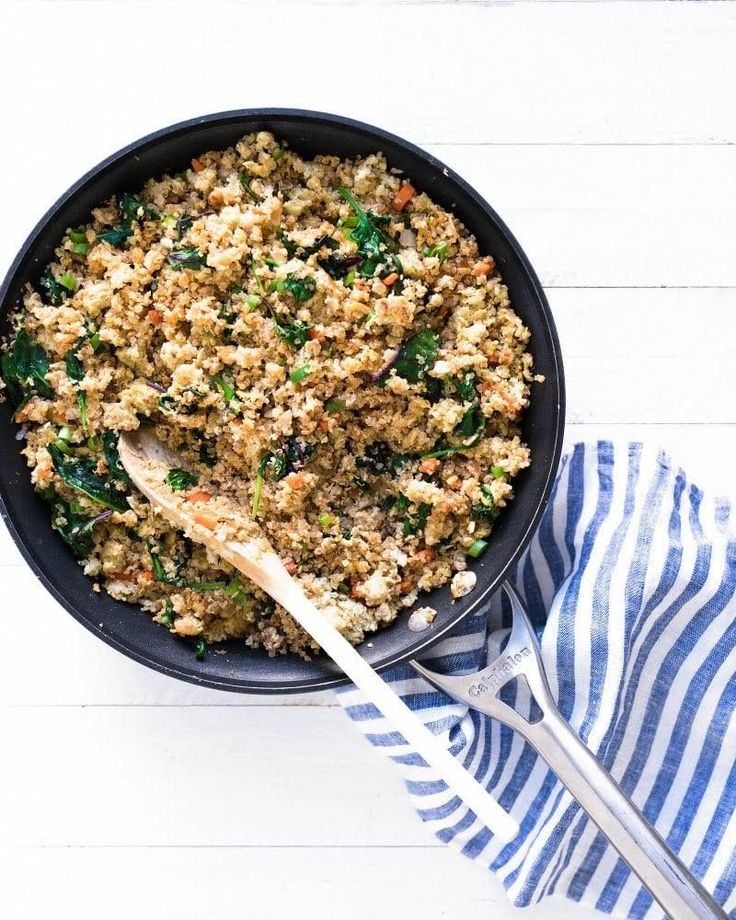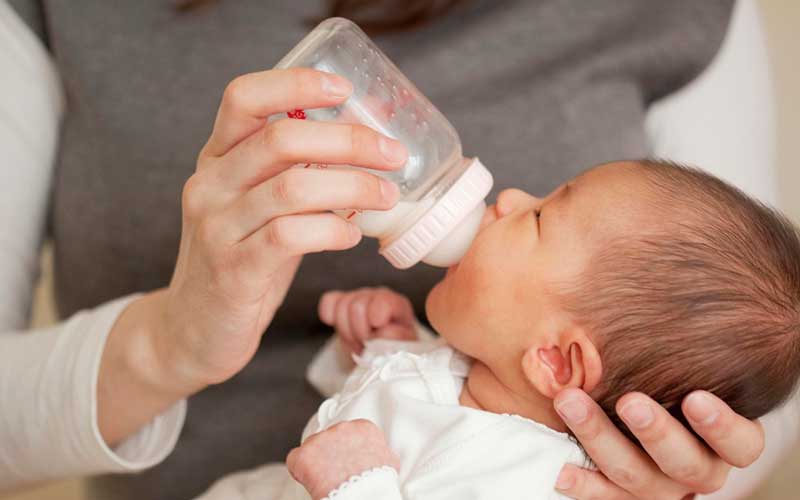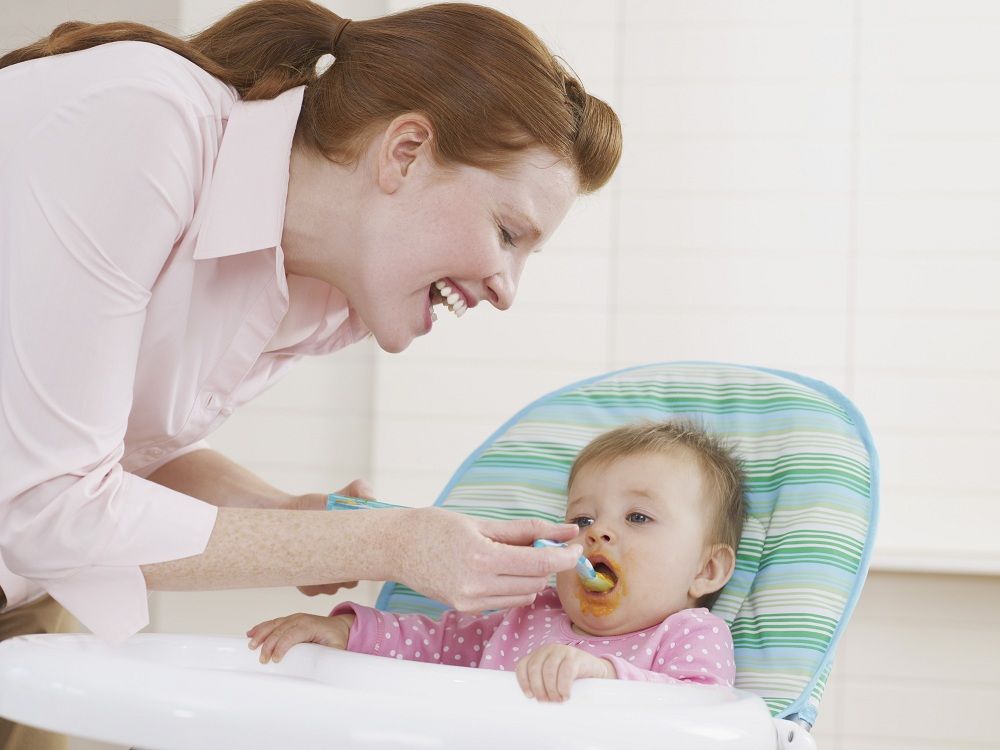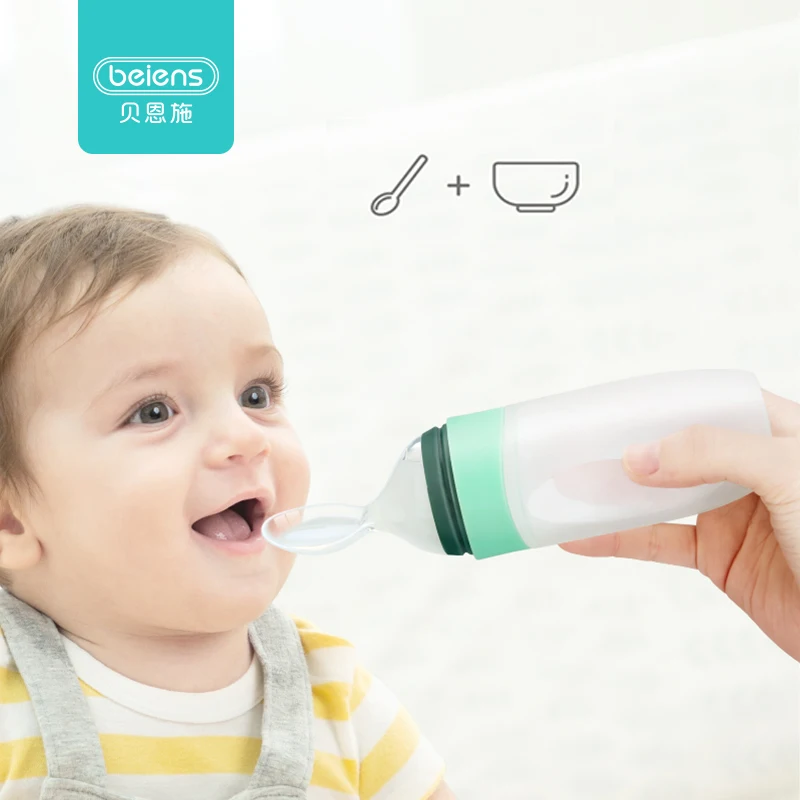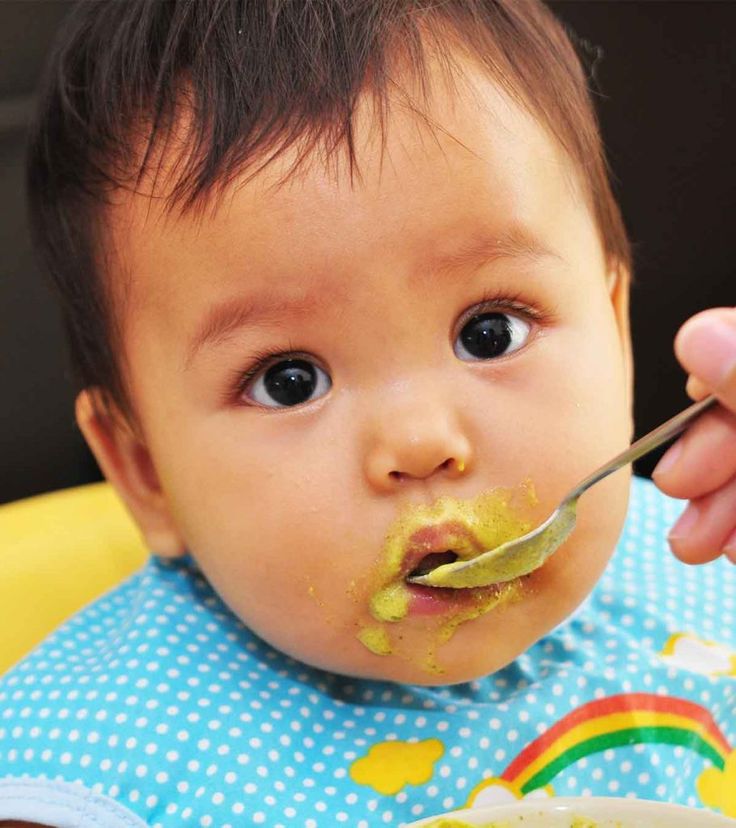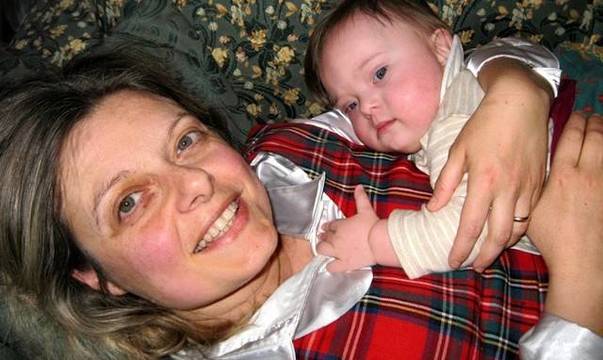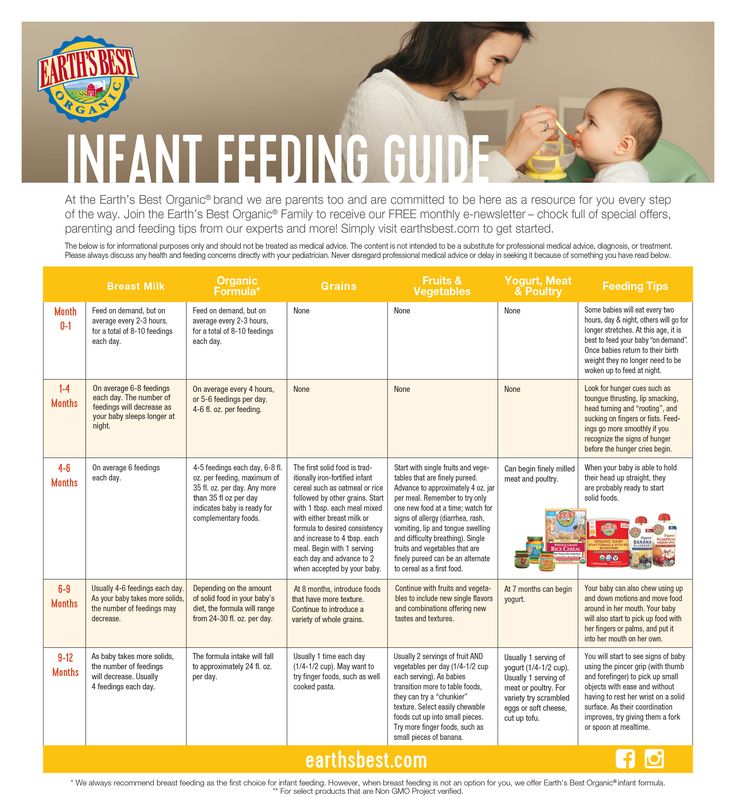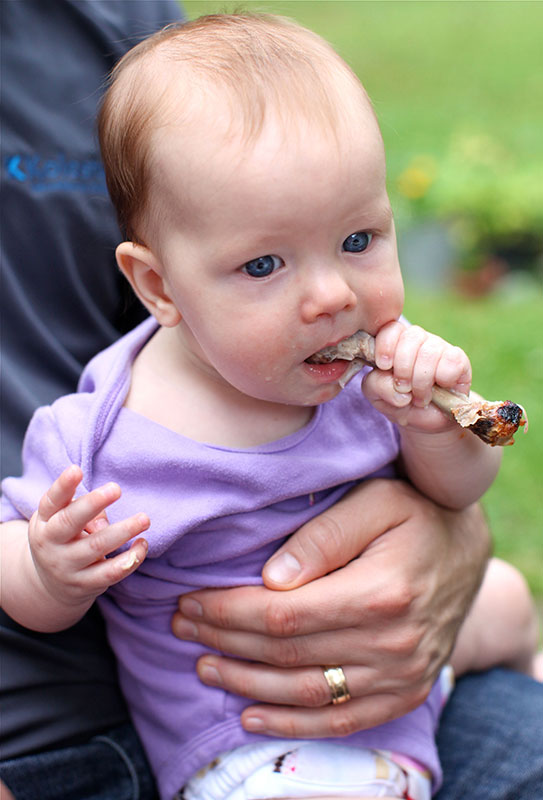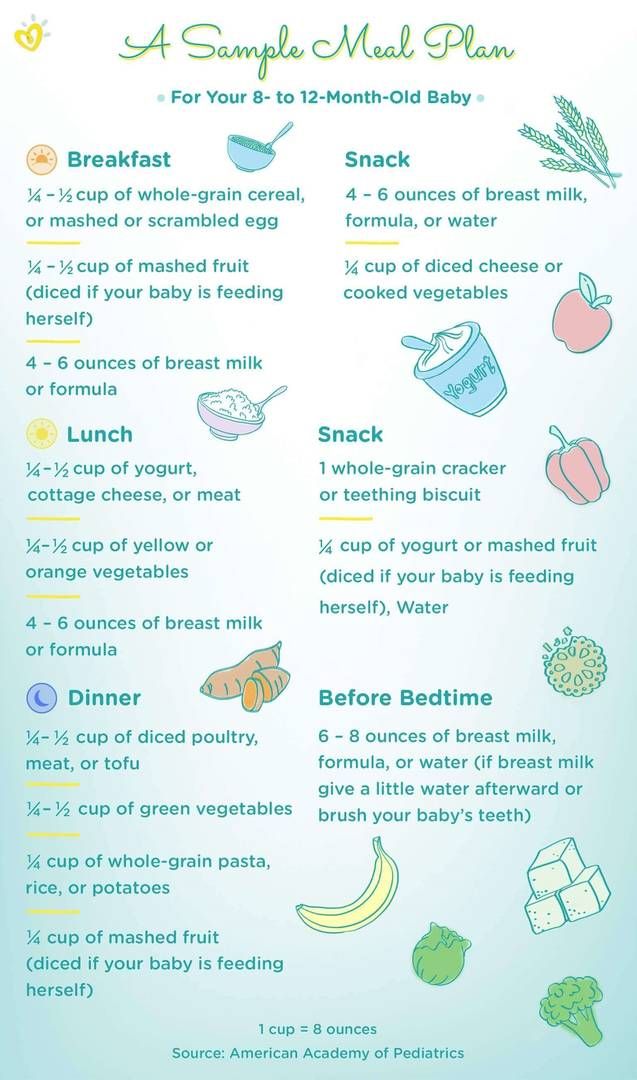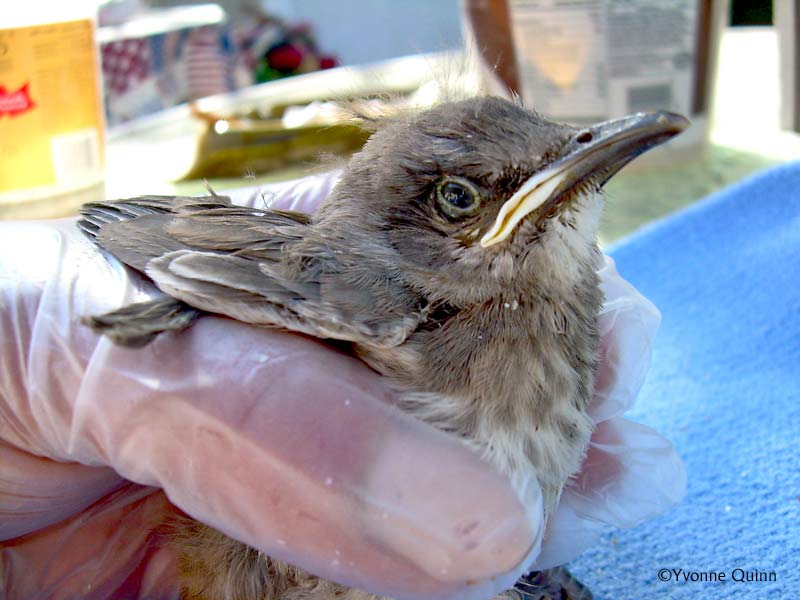Quinoa baby food recipes
How to Cook Quinoa for Babies
By Min On , Updated
This post may contain affiliate links. Please see our disclosure policy for more details.
Share or Save It for Later!
Jump to Recipe
Quinoa is one of the best first foods for babies! Here's how to cook it perfectly every single time as well as some healthy and easy serving suggestions.
When can babies eat quinoa?
Quinoa can be offered to babies as soon as they’re ready to start solids, usually around 6 months. It’s important to remember that your baby is unique and that rather than going by the calendar, you need to make sure your baby is DEVELOPMENTALLY ready to start solids.
If you’re unsure, be sure to grab my FREE handout!
Health Benefits
First, quinoa is actually a seed rather than a grain, it's used as and substituted for grains because it's cooked like one.
Quinoa is unique in that it is a complete protein. It is one of the rare non-animal products that provides all 9 essential amino acids. What does this mean?
Many plant foods have incomplete proteins bc they lack one or more of the essential amino acids. Therefore, you must consume it with another source that contains the amino acid that's missing. Both combined are called "complementary proteins."
Food pairings that make up the complementary proteins are:
- Legumes with grains, seeds, nuts, or dairy. Example: lentil chili with whole wheat bread
- Grains with dairy. Example: savory baked oatmeal with milk
- Dairy with nuts/seeds, legumes. Examples: Yogurt with hemp seeds
However, this isn't to say that you have to be intentional about pairing them together at each meal. As long as you eat a well-balanced diet with a variety of plant foods throughout the day, you should be set.
In addition to quinoa being a complete protein, it is also an excellent source of...(to name a few):
- Iron: Here’s an entire post dedicated to this essential nutrient for babies!
- Magnesium: Helps relax muscles and blood vessels
- Fiber: We all know why we need fiber! Regularity is key! 😉
- Omega 3 and 6 fatty acids: Necessary for optimal brain development
- Manganese: An essential mineral required to manufacture enzymes necessary for the metabolism of proteins and fats; has important antioxidant properties
- Phosphorous and Copper: Necessary for bone-building
Related Post: Best First foods for babies
Is quinoa safe for babies?
You don't need to introduce it with caution as it's neither a choking hazard nor one of the top allergens.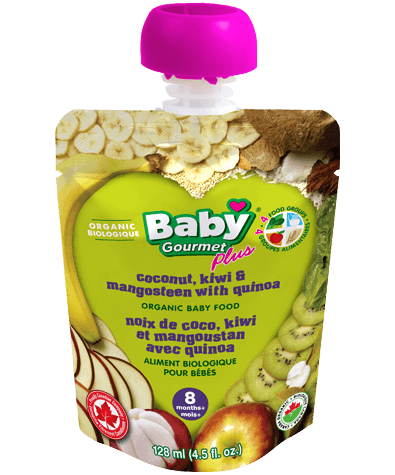 It's a great alternative to rice (which you do want to avoid offering regularly due to arsenic) and wheat, a top allergen.
It's a great alternative to rice (which you do want to avoid offering regularly due to arsenic) and wheat, a top allergen.
How to cook
On the stovetop
- Rinse in a fine mesh strainer.
- Add quinoa to a pot along with liquid of choice.
- Bring to a boil.
- Simmer, covered for about 15-20 minutes, until soft and fluffy.
In the Rice cooker
Treat it like rice! The quinoa to water ratio remains the same. Stir so it doesn't stick to the bottom. Close the lid and press start or the button used for cooking white rice, if you have it.
Once done, remove from the rice cooker within 15 minutes so it doesn't get too mushy from the residual steam.
Expert Tips
- Rinse first to get rid of its natural coating, called saponins, which can make the cooked grain taste bitter.
- The perfect quinoa to water ratio is 1 cup dry quinoa to 2 cups water. This will yield about 3 cups cooked.
- Don't overcook.
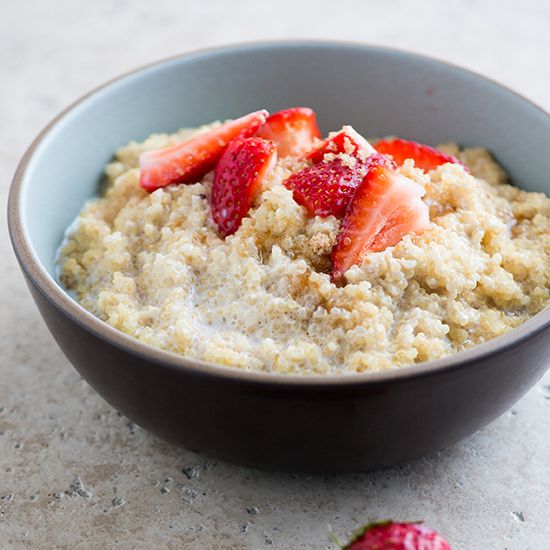 Generally, it should take about 15-20 minutes to achieve that perfectly fluffy texture.
Generally, it should take about 15-20 minutes to achieve that perfectly fluffy texture. - Once cooked, cover and let it stand for 5 minutes or so. This will allow for the quinoa to steam, making it extra fluffy.
- If you want to cook more than 1 cup of quinoa to enjoy throughout the week or freeze, cook in batches to minimize the chances of overcooking. Otherwise you will end up with overcooked, mushy product.
- Boost flavor! Feel free to use broth instead of water, and once cooked, stir in some oil or butter, herbs and spices (hold off if intending to enjoy in many different ways).
Herbs and spices for baby
Serving Suggestions
So what does it taste like? It is light, fluffy, and slightly nutty.
While you can totally serve it on its own, I dare not do this. Well, I have before, and I watched in horror as the tiny grains flew everywhere.
So while messy eating is an important part of learning to self feed, we can use other foods for this ;).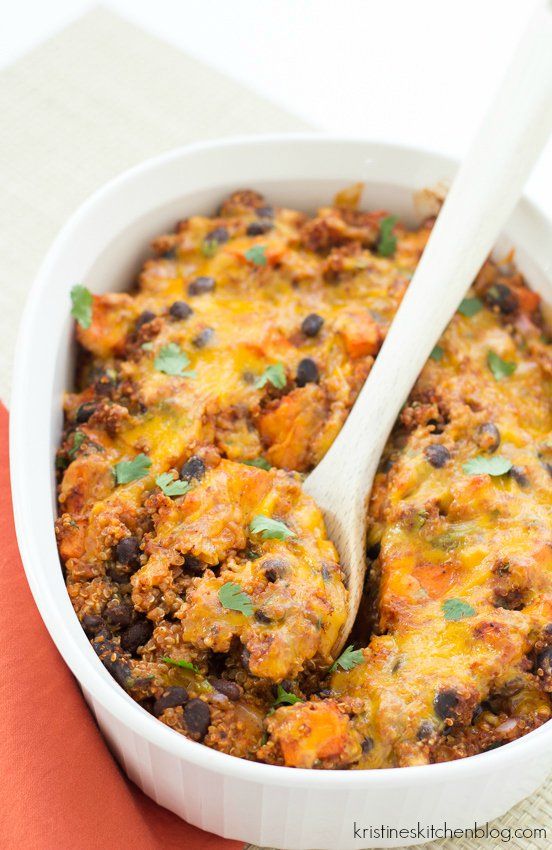 The key to serving quinoa is to mix it into something that’s thick so it will be easier to scoop with hands.
The key to serving quinoa is to mix it into something that’s thick so it will be easier to scoop with hands.
Here are some suggestions:
- yogurt
- mashed avocado
- mashed starchy vegetables - like sweet potatoes, butternut squash
- beans and legumes, like lentils - you can even shape into balls to make it even easier to eat
- other thicker grains - like oatmeal, rice
You can also add to baked goods - like these vegan vegetable muffins, sweet potato patties, and chickpea patties.
Enjoy this delicious, versatile grain for breakfast, lunch, and dinner!
Quinoa Porridge
If you're doing purees, you can go a step further and blend cooked quinoa. Now you have a nutritious baby cereal and a blank canvas where you can mix in all kinds of toppings to invite variety and texture!
Check out Quinoa Baby Cereal (4 Ways)
Frequently Asked Questions
Do you need to puree cooked quinoa for babies?
You don't unless that's what you feel comfortable doing.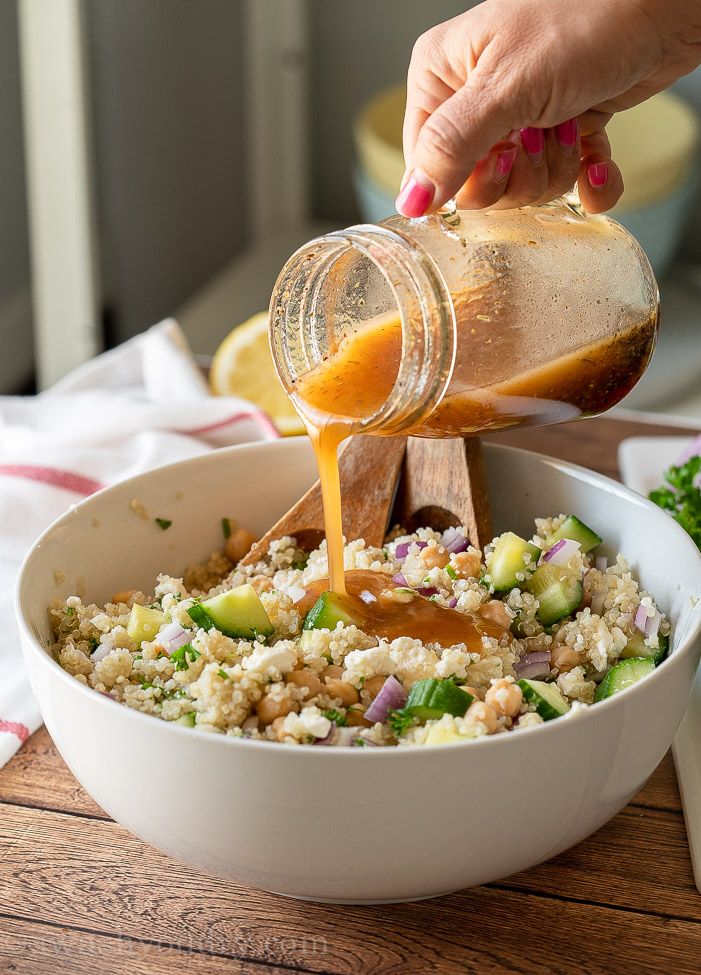 Yes, I am a big proponent of baby led weaning, but even more so an advocate for do what feels right for YOU!
Yes, I am a big proponent of baby led weaning, but even more so an advocate for do what feels right for YOU!
Start with puree and because it is important to move forward with texture by 9 months of age, gently remind and challenge yourself and your baby to try nonpureed foods.
If you feel like you're stuck on purees, here's some guidance.
What type of quinoa is best for babies?
Did you know that there are over 1000 varieties of quinoa?! The three main varieties you'll find in the store are white, red, and black. They are all safe and all great options.
I recommend starting with white quinoa as it has the mildest flavor and softest texture. The other two have a more earthy, stronger flavor, as well as a toothsome texture.
Do I REALLY need to rinse quinoa?
To minimize the chances of it tasting bitter once cooked, it is best to do so. Having said this, I've been purchasing from Costco for years now, and my family hasn’t noticed a difference.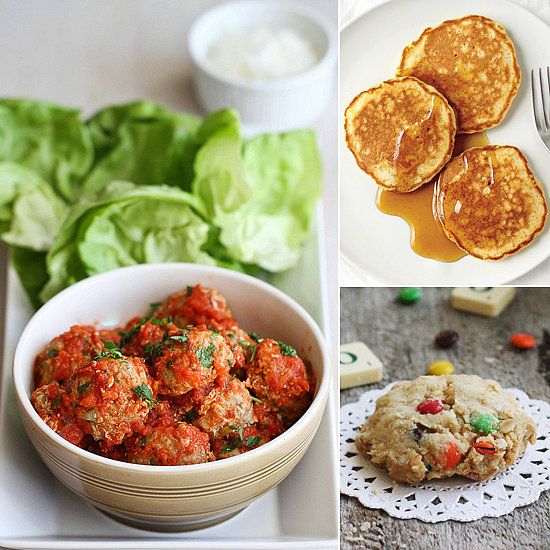 If anything, the unrinsed quinoa has a nuttier flavor.
If anything, the unrinsed quinoa has a nuttier flavor.
Texture wise, I've found rinsing does make it a bit softer. So I leave it up to you. Perhaps do a little experiment to see!
How to store once cooked?
Allow for quinoa to cool completely. Transfer to an airtight container and keep in the fridge for up to 5 days.
Can you freeze?
Yes! Again, cool completely, and divide into individual portions. Place in freezer-safe bags or containers and freeze for up to 2 months. Thaw in the fridge overnight.
Quinoa recipes for babies
- Korean beef and broccoli quinoa
- Instant Pot Multigrain Rice
- Baked quinoa and mushroom beef meatballs
- Vegan vegetable quinoa muffins
- Overnight quinoa
- Chicken quinoa spinach casserole
- One pot parmesan pumpkin quinoa
- Vegetarian roasted cauliflower lasagna
Did you make this recipe? Leave a rating below and let me know how you liked the recipe! Your feedback means so much to me!
How to cook quinoa for babies
Quinoa is one of the best first foods for babies! Here's how to cook it perfectly every single time as well as some healthy and easy serving suggestions.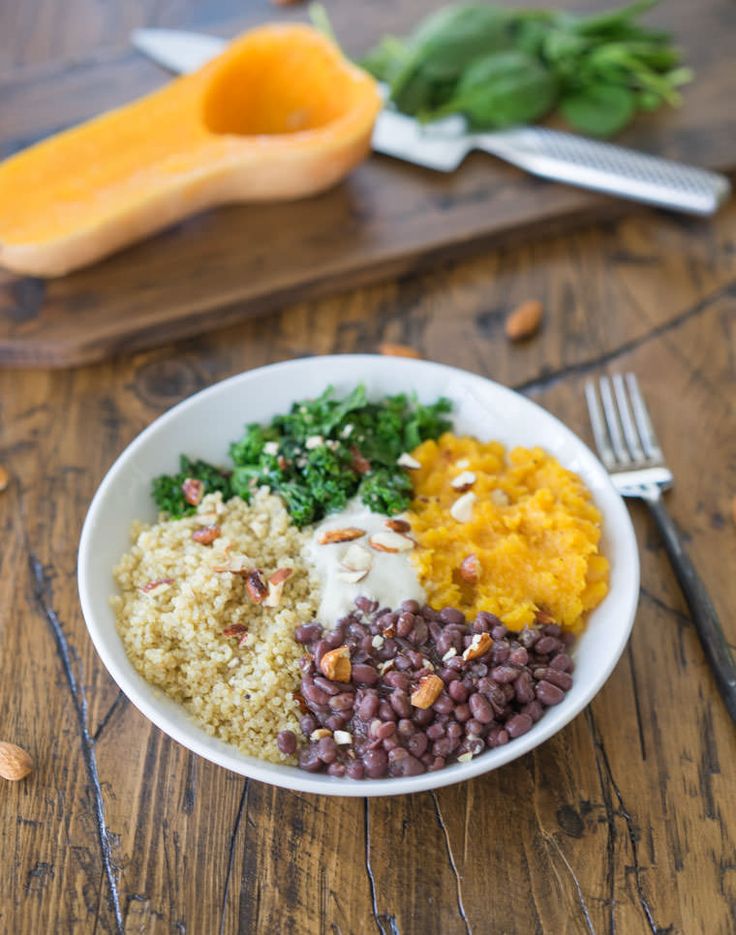
5 from 2 votes
Print PinPrep Time: 2 minutes
Cook Time: 20 minutes
Total Time: 22 minutes
Servings: 12
Author: Min | MJ and Hungryman
- ▢ 1 cup dry quinoa (195g)
- ▢ 2 cups water, broth, or milk of choice
Add quinoa to a fine mesh strainer and rinse under cool water. Drain.
In a medium pot, add quinoa and liquid of choice.
Stir and bring to a boil. Reduce heat to low, cover, and simmer for 15 minutes.
Remove from heat and let it stand for 5 minutes, covered. Fluff with a fork.
You can puree cooked quinoa and add toppings to make it a well-balanced meal for your baby. Here's my quinoa baby cereal recipe and 4 variations to try!
Allow for quinoa to cool completely. Transfer to an airtight container and keep in the fridge for up to 5 days.
To freeze: cool completely, and divide into individual portions.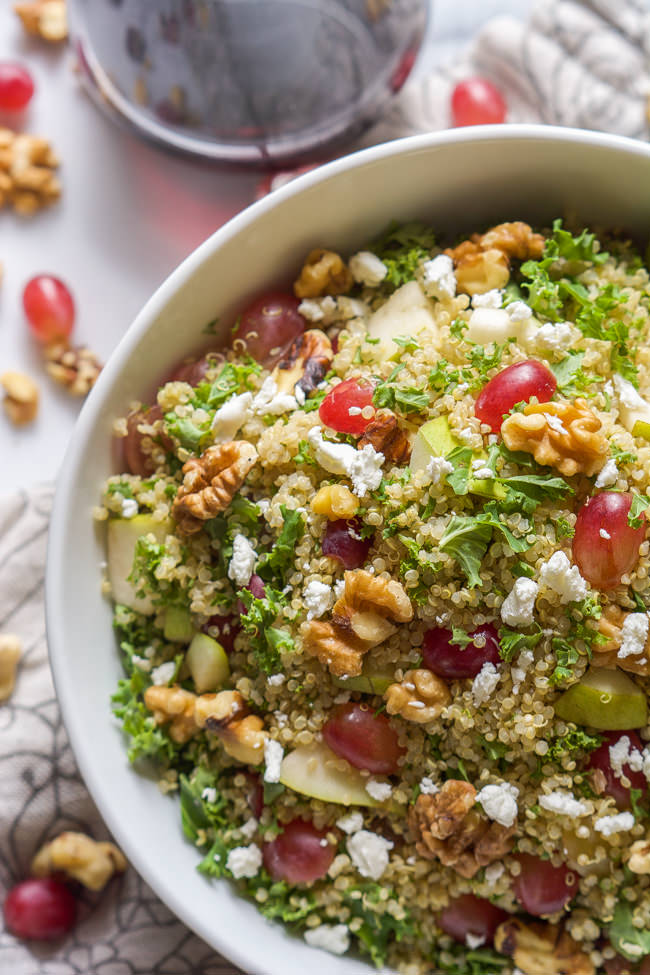 Place in freezer-safe bags or containers and freeze for up to 2 months. Thaw in the fridge overnight.
Place in freezer-safe bags or containers and freeze for up to 2 months. Thaw in the fridge overnight.
Calories: 52kcal | Carbohydrates: 9g | Protein: 2g | Fat: 1g | Sodium: 1mg | Potassium: 80mg | Fiber: 1g | Calcium: 7mg | Iron: 2mg
Course Side
Cuisine American
Tried this Recipe? Tag me Today!Tag me @KidFriendly.Meals today!
Share or Save It for Later!
Share: [addtoany]
About Min
Thank you so much for stopping by! I am Min, a Registered Dietitian, a Christ follower, a wife, and a mom to our two miracle babies! Currently, I’m having a ton of fun feeding their tummies and sharing our baby led weaning journey! Follow me on Instagram if interested in seeing daily menu as well as tips and tricks.
Reader Interactions
Quinoa for Babies (Quinoa Baby Food)
Transform nutrient-rich quinoa into a delicious baby food—with options for older kids and parents to share it—with this simple method.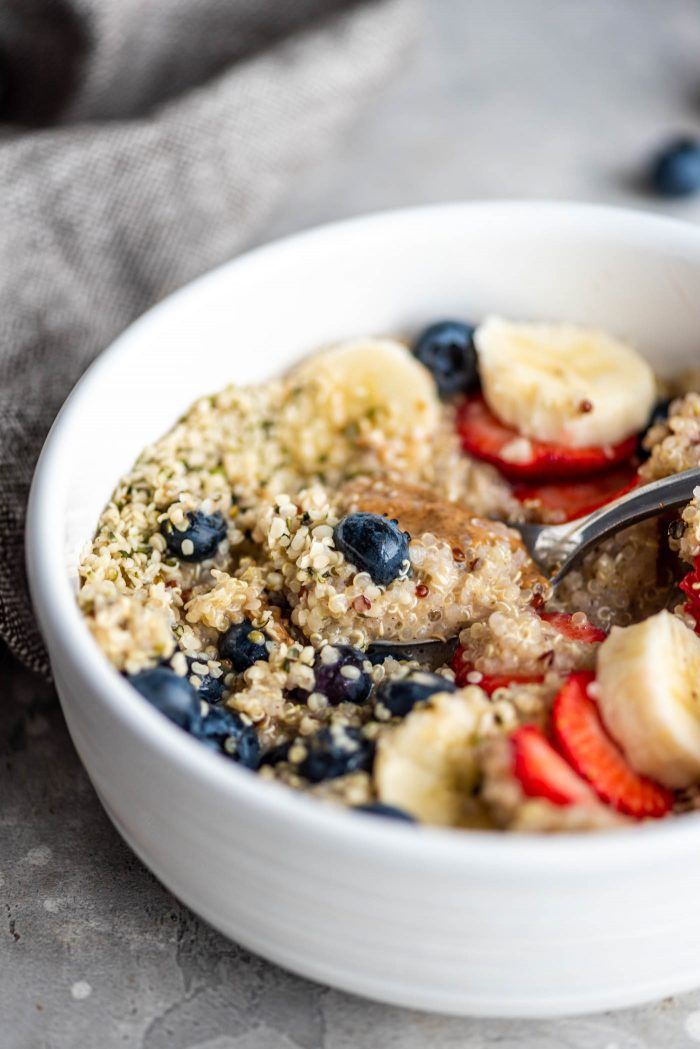 (Find flavor variations and storage tips, too.)
(Find flavor variations and storage tips, too.)
Quinoa for Babies
I love to maximize nutrients and flavor in baby food we’re offering right from the start—and also be able to easily make foods that the rest of the family can enjoy to limit waste. This baby cereal, which is made with quinoa, achieves both of those goals with a flexible method, easy storage, and so many ways to add a variety of flavors.
The beauty of this method for homemade baby cereal is that you can start with an ingredient you may already have in your pantry (or that you can easily pick up at the store), and then make it from start to finish in about 20 minutes.
The leftovers can store in the fridge or freezer, so you don’t have to do the work very often.
Quinoa Baby Food
Quinoa is a perfect early food to share with the kids since it’s packed with nutrition—including complete protein (which is rare in a vegetarian food) and fiber. It’s also versatile and can be flavored with so many spices or other fresh ingredients, which means you can change this according to what you have on hand.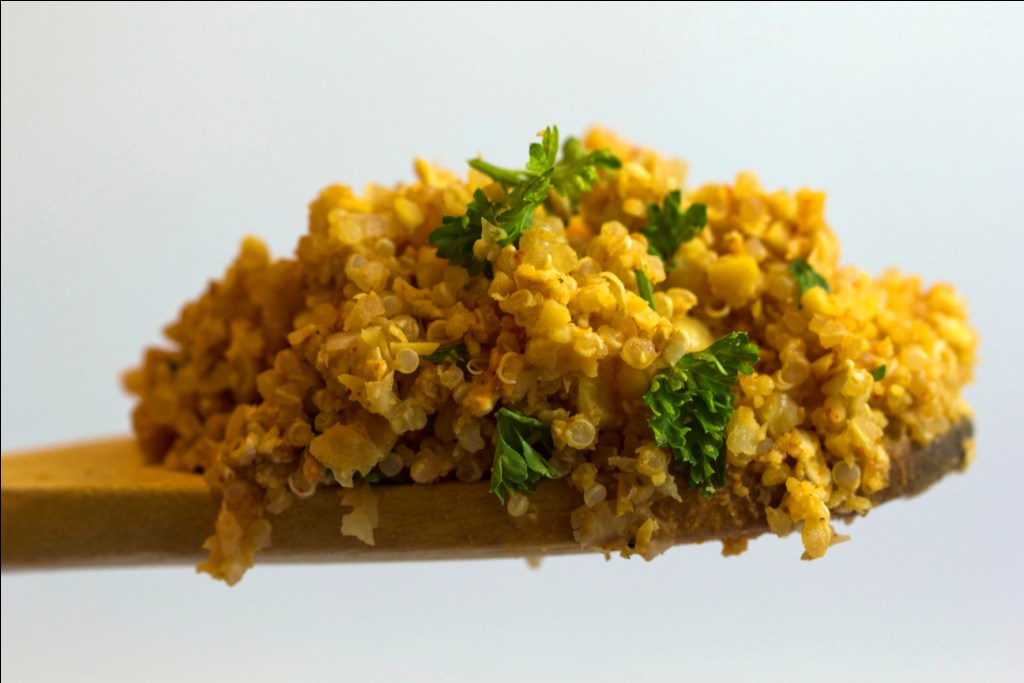
The options I’m going to share here are for a blended baby food that can be used as a Stage 1 option for babies just starting solids. Then I share a more textured version that older babies can enjoy as a Stage 3 baby food—and that can be shared with toddlers, older kids, and parents, too.
The base recipe has just three ingredients and then there are easy options to change it up.
Quinoa Baby Cereal
Classic baby cereal is made from rice or oatmeal, which are both nice options. Quinoa offers a different mix of nutrients, doesn’t have the potential heavy metal concerns as rice, and is really quick to cook.
Ingredients You Need
To make this recipe, you’ll need:
- Quinoa: You can use any color. I use yellow (or the most common one) here.
- Cinnamon: Optional, but recommended for some flavor.
- Vanilla extract: Optional, but recommended for some flavor. I am using alcohol-free here since that’s what I had on hand, though the amount used in each serving is tiny, so the regular kind is fine too.
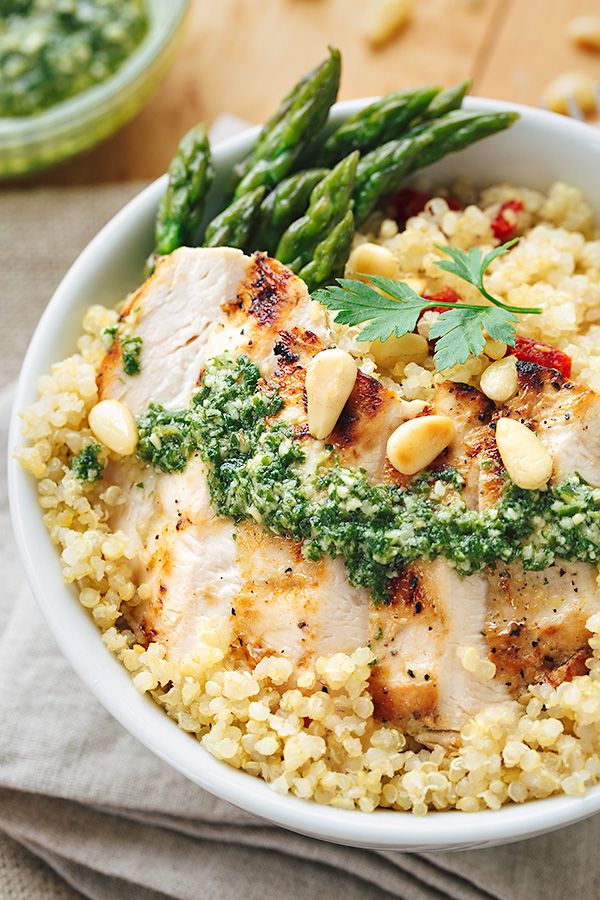
- Liquid such as water, breastmilk, formula, or unsweetened nondairy milk.
Ingredient Substitutions
- You can use red quinoa if you have that variety.
- For the liquid in this recipe, you can use water, breastmilk, formula, or unsweetened nondairy milk such as soy milk, oat milk, or a plant milk (for example, the Ripple brand).
- Use another spice, such as a pinch of ginger, cardamom, or pumpkin pie spice instead of or in addition to cinnamon.
Step-by-Step Instructions
Here’s a look at how to make this quinoa baby cereal. Scroll down to the bottom of this post for the full information.
- Rinse the quinoa in a fine mesh sieve.
- Add to a pot of water and cook until very soft.
- Add quinoa to the blender with chosen liquid.
- Blend until very smooth. Serve with desired optional ingredients for more flavor.
TIP: You can serve this on its own or mixed with another puree for more flavor.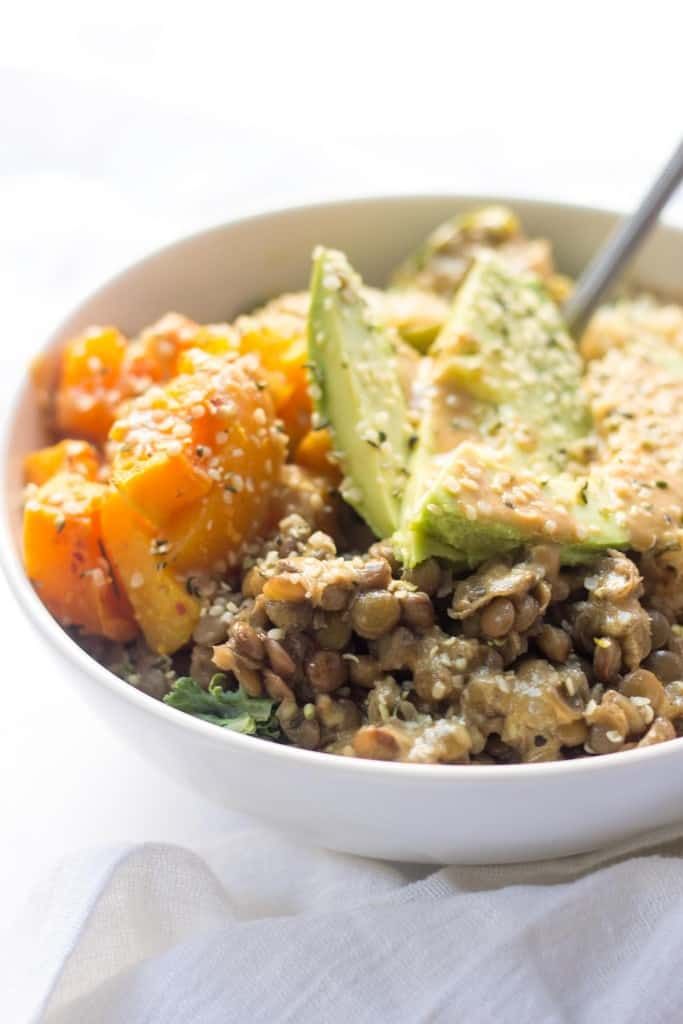 You can also serve the quinoa unblended as a breakfast similar to oatmeal for kids 9 months old and older.
You can also serve the quinoa unblended as a breakfast similar to oatmeal for kids 9 months old and older.
Frequently Asked Questions
Can babies eat quinoa?
Quinoa is a great baby food since it’s nutrient-dense and easy to flavor. You can make pureed smooth quinoa baby food or a thicker, more textured quinoa baby cereal.
Can babies eat pureed quinoa?
Pureed, fully cooked quinoa is an easy baby food to make at home that’s also easy for babies to eat. It can be offered as a Stage 1 baby food soon after baby starts solids—and then for as long as you like. (It resembles cream of wheat, so adults can enjoy it, too.)
How do you serve quinoa to babies?
To serve quinoa to a baby just starting solids, you blend fully cooked quinoa with liquid to make a puree. You can add cinnamon and vanilla and/or stir in other purees.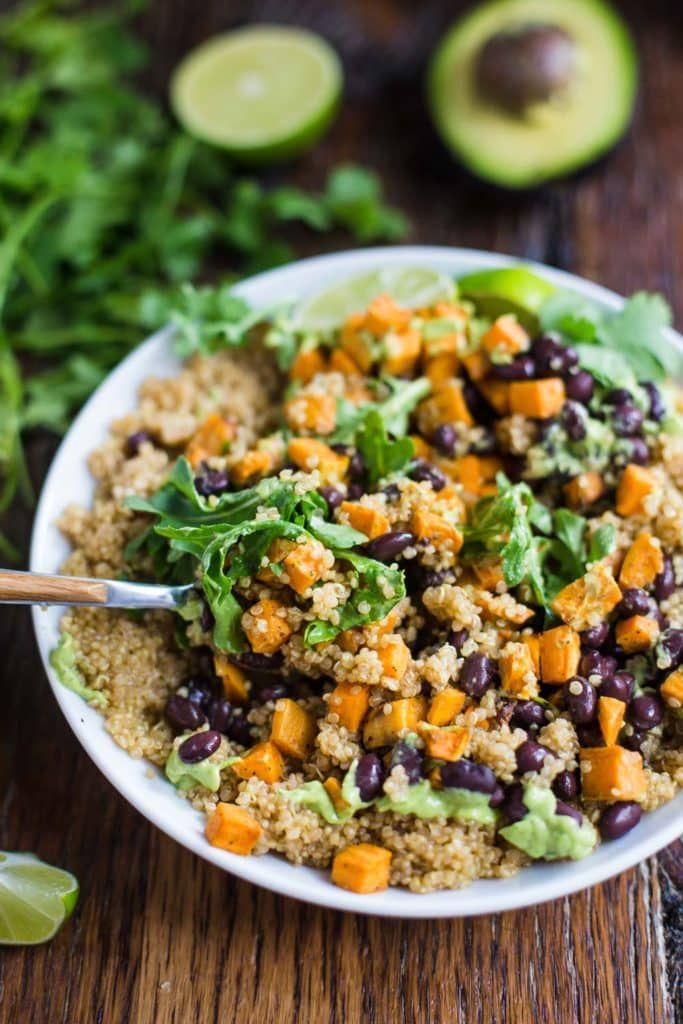 You can also serve fully cooked quinoa with nondairy milk as a thicker breakfast cereal for babies about 8-9+ months.
You can also serve fully cooked quinoa with nondairy milk as a thicker breakfast cereal for babies about 8-9+ months.
Is quinoa good for constipation?
Quinoa is rich in fiber and when paired with healthy fats and hydration may help with constipation.
Quinoa Baby Food Combinations
Here’s a look at ways to combine quinoa baby cereal with other purees and ingredients to make new flavors. Feel free to add a sprinkle of cinnamon or other spices to these, or to mix in a liquid such as unsweetened nondairy milk.
- Strawberry Quinoa Cereal: Mix in 2 tablespoons Strawberry Puree to ¼ cup quinoa baby cereal.
- Peanut Butter Quinoa Puree: Mix in 1 tablespoon unsweetened smooth peanut butter to quinoa baby cereal.
- Sweet Potato Quinoa Cereal: Stir in 2 tablespoons Sweet Potato Puree to quinoa puree.
- Banana Quinoa Puree: Stir in 2 tablespoons mashed Banana Puree to quinoa baby food.
TIP: Stir in a small amount of hemp seeds, chia seeds, or ground flax seeds (or oils) to add more healthy fats to any of these.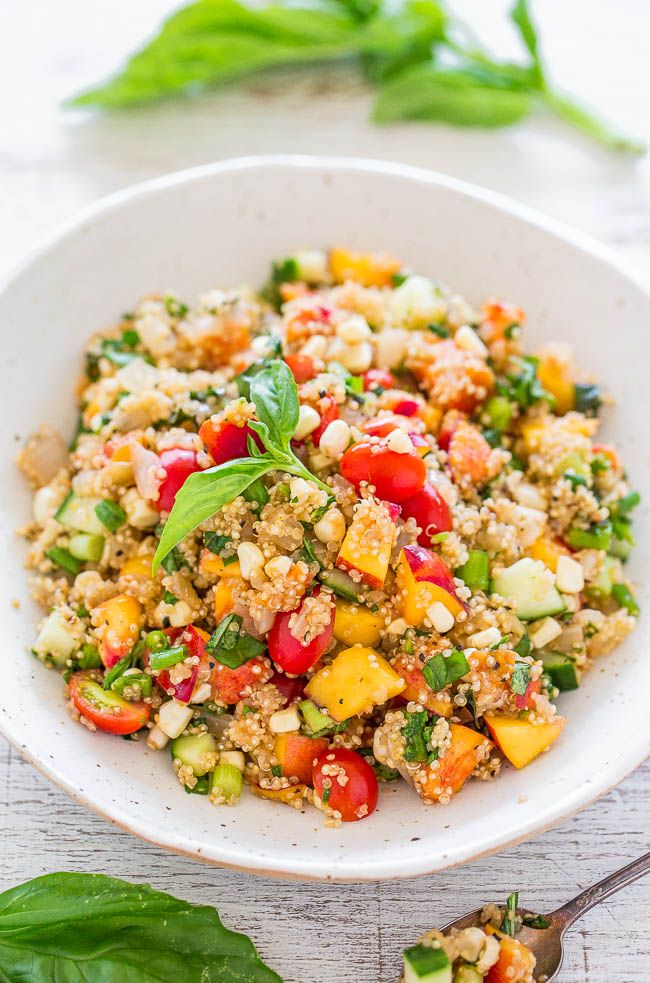
How to Adjust the Consistency of Baby Cereal
When you blend up quinoa baby cereal, you can add more or less liquid to make a thinner or thicker puree. When the puree sits in a storage container (or even for a bit at room temperature), it also thickens, so you can thin it out by stirring in additional liquid.
You can really make it as thick or thin as you like. Thinner is easier to serve off of a baby spoon and thicker could be served to babies who prefer to feed themselves with their hands.
I like to use unsweetened plain nondairy milk (such as oat milk or soy milk) to add in extra nutrients and flavor if I’m thinning out the cereal after it’s been in storage.
You can do the same with unblended quinoa cereal—simply stir in more or less milk to make a thicker or thinner breakfast cereal.
How to Store
Store in portions in small containers in the fridge for up to 3 days or portion into an ice cube tray and freeze overnight. Transfer frozen blocks to a freezer bag and remove as much air as possible.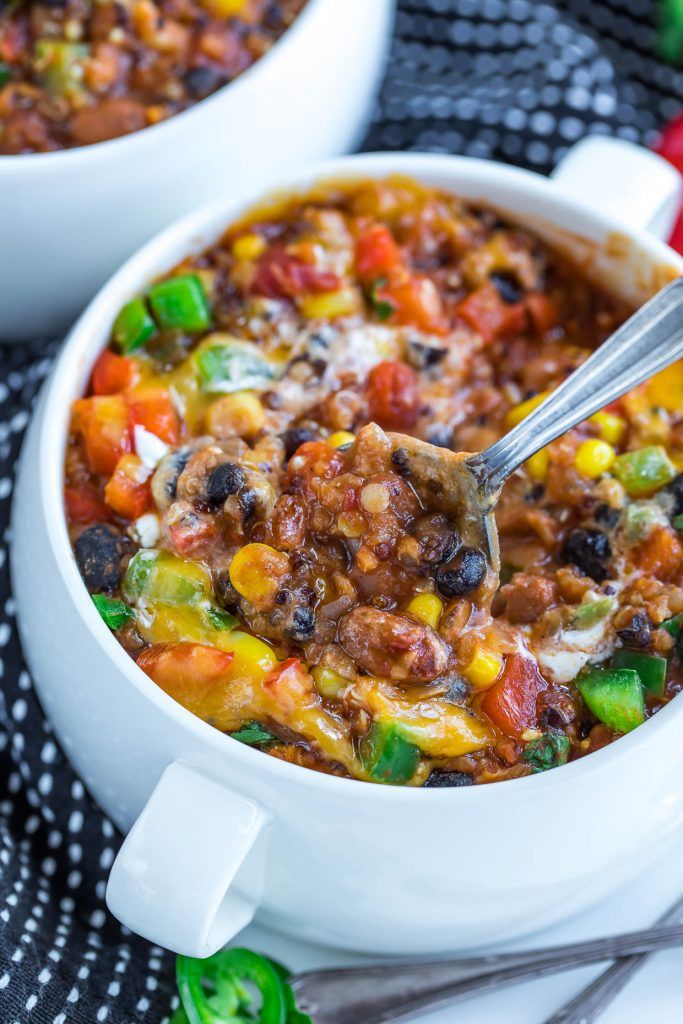 Store in the freezer for up to 6 months.
Store in the freezer for up to 6 months.
To thaw, place a block into a small airtight container and refrigerate overnight. Or leave at room temperature for 2-3 hours.
TIP: Find more about how to store baby food here.
Best Tips for Success
- Rinse the quinoa before cooking to remove any potential bitterness.
- Start with a smaller amount of liquid when blending and add a little at a time to thin it out to your liking.
- You can use water, breastmilk, formula, or unsweetened nondairy milk for blending. (I prefer to use water, then stir in a flavored liquid right before serving.)
- Add another puree to make quinoa baby food combinations. Favorite options include Strawberry Puree, Banana Puree, Sweet Potato Puree, and Peanut Butter Baby Food. You can also try a savory version by stirring in Avocado Puree.
- Add cinnamon, cardamom, dried ginger, or another favorite spice.
- Add a sprinkle of hemp seeds, chia seeds, or ground flaxseeds for more healthy fats.
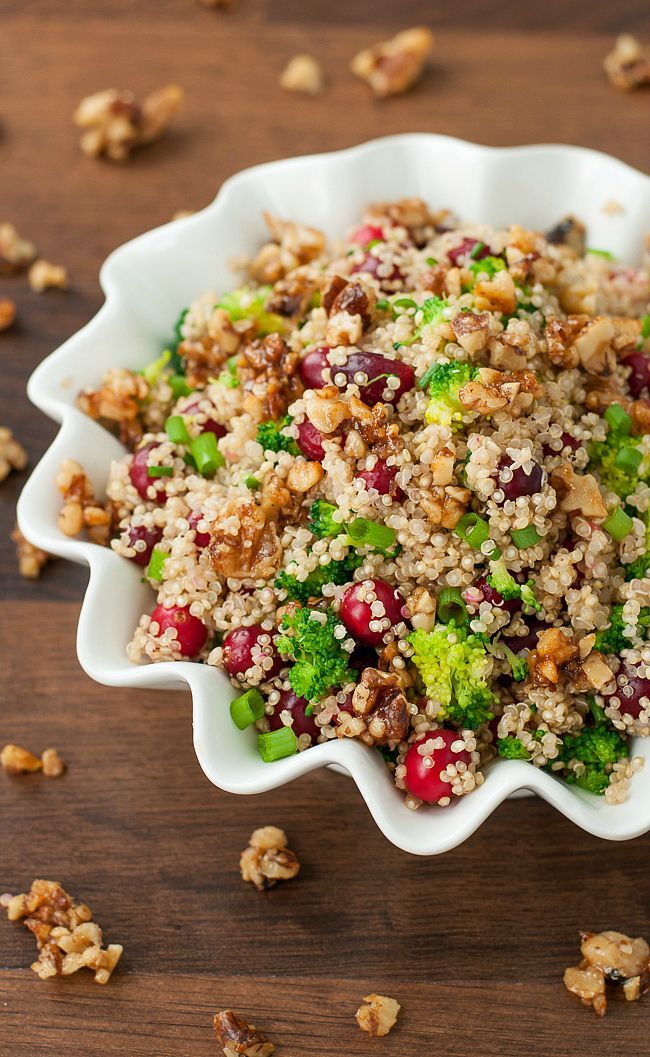
- Skip blending and simply mix fully cooked quinoa with nondairy milk for babies at least 8-9 months old—or for toddlers, kids, or adults as a breakfast cereal option.
- You may also like Quinoa Pudding, How to Cook Quinoa, Baby Oatmeal, and my Master List of Baby Food Recipes.
Related Recipes
I’d love to hear your feedback on this recipe, so please comment and rate it below to share.
Prep Time 5 minutes
Cook Time 15 minutes
Total Time 20 minutes
Author Amy Palanjian
Cuisine American
Course Breakfast
Calories 49kcal
Servings 8
- ▢ 1/2 cup quinoa
- ▢ 1 cup water
- ▢ 1/4 cup breastmilk, formula, or nondairy milk (optional)
- ▢ 1/2 teaspoon cinnamon (optional)
- ▢ 1/2 cup fruit puree (optional)
Add the quinoa to a fine-mesh sieve and rinse under cold water for about 1 minute. This helps to remove the tannins that can make quinoa taste bitter.
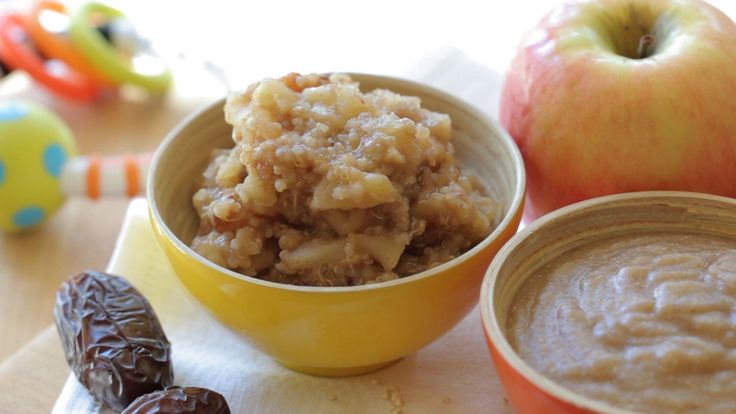
Add the 1 cup water to a medium pot and bring to a boil over high heat. Add the quinoa, reduce the heat to medium-high and simmer for 15 minutes or until water is absorbed and the quinoa is tender. (Add 1/4-½ cup additional water if the water is absorbed but the quinoa is not yet fully tender.
Turn off the heat. Cover and let sit for 5 minutes.
Add quinoa to a blender. Blend, adding a small amount of liquid at a time, until the mixture is very smooth. It may take a minute.
Stir in cinnamon and/or fruit puree if desired. Thin out with additional liquid as desired.
(To serve this with a thicker, more textured consistency, simply place a small amount of the cooked quinoa into a bowl, add some nondairy milk, breastmilk, or formula and add cinnamon and fruit as desired. For kids over age 1, you can drizzle on a little honey, maple syrup, or nut butter too.)
Calphalon 5-Quart Pot
Vitamix Blender
Storage Containers
- Start with a smaller amount of liquid when blending and add a little at a time to thin it out to your liking.

- You can use water, breastmilk, formula, or unsweetened nondairy milk for blending. (I prefer to use water, then stir in milk right before serving.)
- Add more liquid to this cereal as needed—it firms up as it sits.
- Add another puree to make quinoa baby food combinations. Favorite options include Strawberry Puree, Banana Puree, Sweet Potato Puree, and Peanut Butter Baby Food. You can also try a savory version by stirring in Avocado Puree.
- Add cinnamon, cardamom, dried ginger, or another favorite spice as desired.
- Add a sprinkle of hemp seeds, chia seeds, or ground flaxseeds to add more healthy fats.
- Skip blending and simply mix fully cooked quinoa with nondairy milk for babies aged 8-9 months old—or for toddlers, kids, or adults as a breakfast cereal option.
Serving: 0.25cup, Calories: 49kcal, Carbohydrates: 9g, Protein: 2g, Fat: 1g, Saturated Fat: 1g, Polyunsaturated Fat: 1g, Monounsaturated Fat: 1g, Sodium: 2mg, Potassium: 87mg, Fiber: 1g, Sugar: 2g, Vitamin A: 174IU, Vitamin C: 6mg, Calcium: 9mg, Iron: 1mg
Tried this recipe?Rate in the comments and tag @yummytoddlerfood on IG!
Quinoa & Apple Encyclopedia Baby Food
Recipes 7-8 Months 8-10 Months Gluten Free Flour Free Meat Free Sugar Free Egg Free Boil Second Breakfast Breakfast Porridge Cereals Dairy Low Calorie High Snack Cooked Puree Fruits and Berries
No Comments
Levchuk Victoria© Quinoa is actually a seed, not a grain.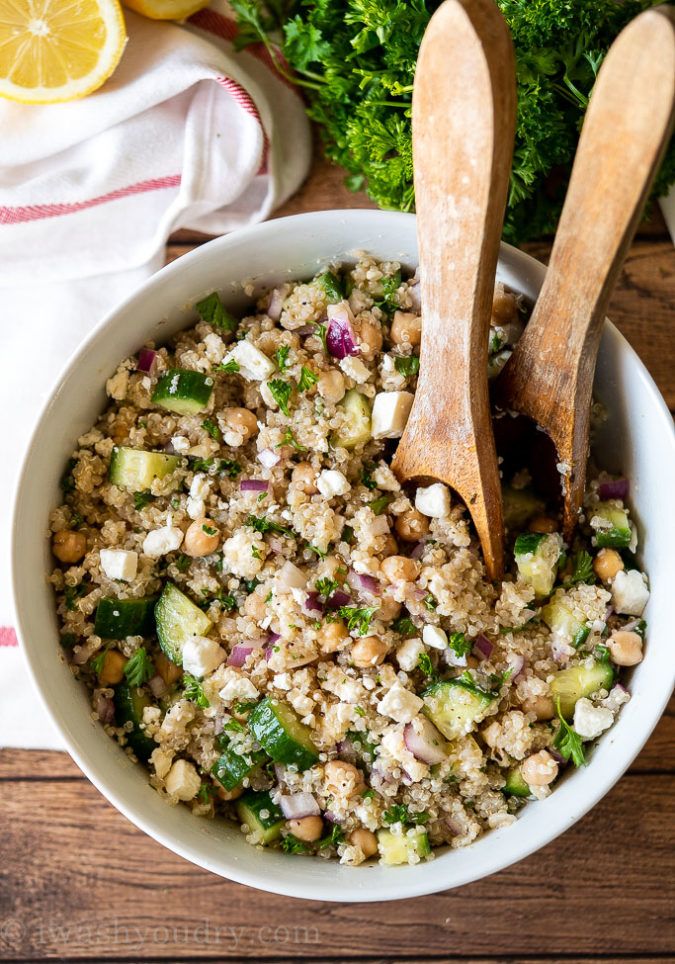 However, it contains fiber, calcium, iron and folic acid. This is why quinoa in baby food is a healthy food starting at 7 months old. Being super easy to digest, you can start introducing quinoa into your baby's diet right from the start of weaning.
However, it contains fiber, calcium, iron and folic acid. This is why quinoa in baby food is a healthy food starting at 7 months old. Being super easy to digest, you can start introducing quinoa into your baby's diet right from the start of weaning.
Quinoa is very easy to prepare, almost like rice and couscous: only 15 minutes in boiling water, that's it! And that is why, when preparing baby food, you can boil the quinoa more so that you can use the leftovers to make a good salad for the rest of the family. One family, one dish!
An added bonus: quinoa is gluten-free, so it's ideal if your child has an allergy or intolerance to gluten.
In addition, due to its high protein content (higher than any grain!!!), quinoa is an excellent source of protein if the child is on a vegetarian diet.
This nutritious grain becomes an excellent addition to the diet of a small person. And quinoa is a very versatile ingredient, perfect for sweet or savory baby food.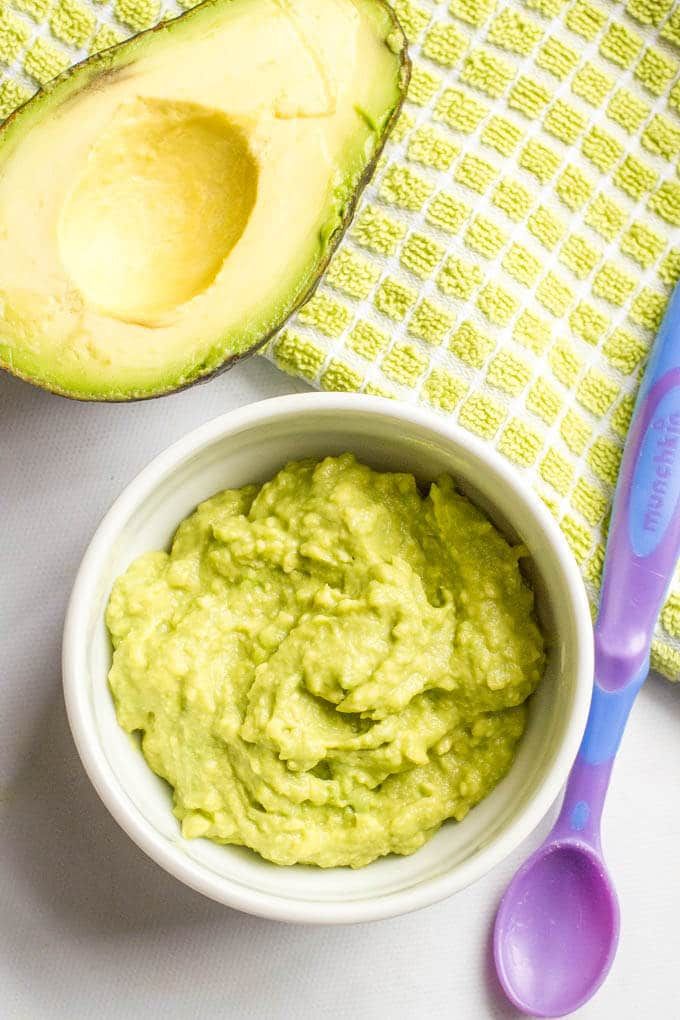
Today we are going to cook a delicate sweet recipe: quinoa and apple.
Quinoa and apple is for baby - 7-8 months.
Introduced complementary foods: Quinoa, apple, breast milk/formula or regular milk.
Ingredients
- 1 cup of apples
- 1 cup of cooked film
- 1/2 cup of milk or water or water 9026 9000
-
Cook an apple for 10 minutes in a double boiler.
-
Add 2 cups water and 1 cup quinoa to the pot. Mix and let boil.
-
When the water boils, reduce heat to low, cover and simmer for 15 minutes.
-
Makes 3 cups of cooked quinoa. You can use 2 cups to make an excellent quinoa salad for the rest of the family.
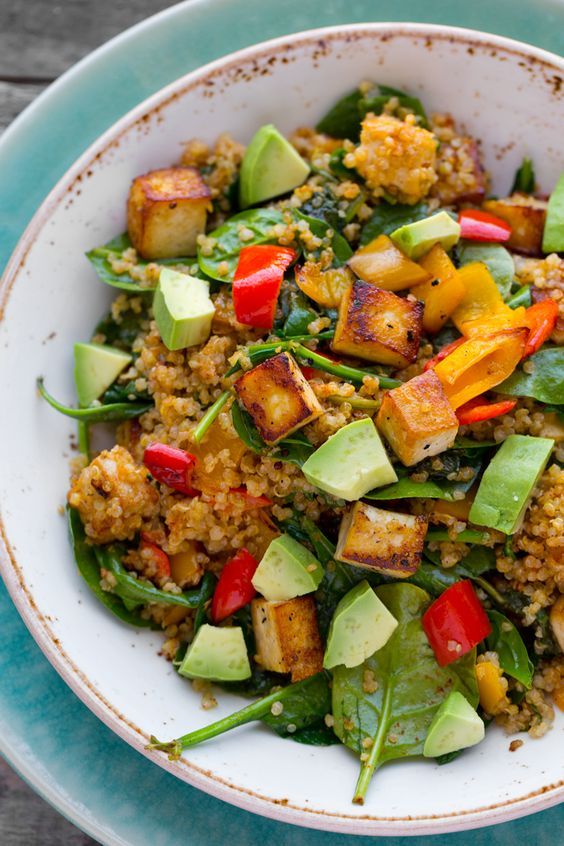
-
Place 1 cup of cooked quinoa, 1 cup of steamed apple and 1/2 cup of water, milk, mixture in a tall container.
-
Use a blender to create a nice and smooth baby puree.
-
Enjoy baby puree immediately at room temperature or slightly warm, or store it in an airtight container in the refrigerator for up to 24-48 hours or in the freezer for up to 3 months.
- 90926
- The first meal of porridge - market analysis of baby's first cereal plus life hacks.
- How to make baby puree thick in consistency.
- How to teach a child to chew - with exercises for the development of masticatory muscles.
- Calcium, phosphorus, magnesium and other minerals are critical for bone growth.
- Iron helps in the production of hemoglobin, which in turn helps to oxygenate the body. Moreover, quinoa is a natural way to increase body reserves in the gland, which are so necessary for a child after 6 months of life.
- Potassium is an electrolyte with minimal side effects.
- Omega 3, 6, 9 fatty acids are good for brain and eye development.
- Lysine helps with growth and tissue repair, especially important for babies when they are learning to crawl, walk and run.
Peel the apple from the core and cut into large pieces. Leave the peel on: since we are going to steam the apple and then mash it, it can be easily eaten and digested.
Social networks:
0001
Levchuk Viktoriya©
Quinoa is slowly gaining popularity in baby food as its status as a superfood becomes more widely recognized. Recently, parents have been thinking about whether to introduce this product into complementary foods?
The health benefits of quinoa include high protein content, a good source of vitamins and minerals, antioxidants, and high fiber content, which acts as a natural laxative. Let's see if quinoa is so useful in baby food.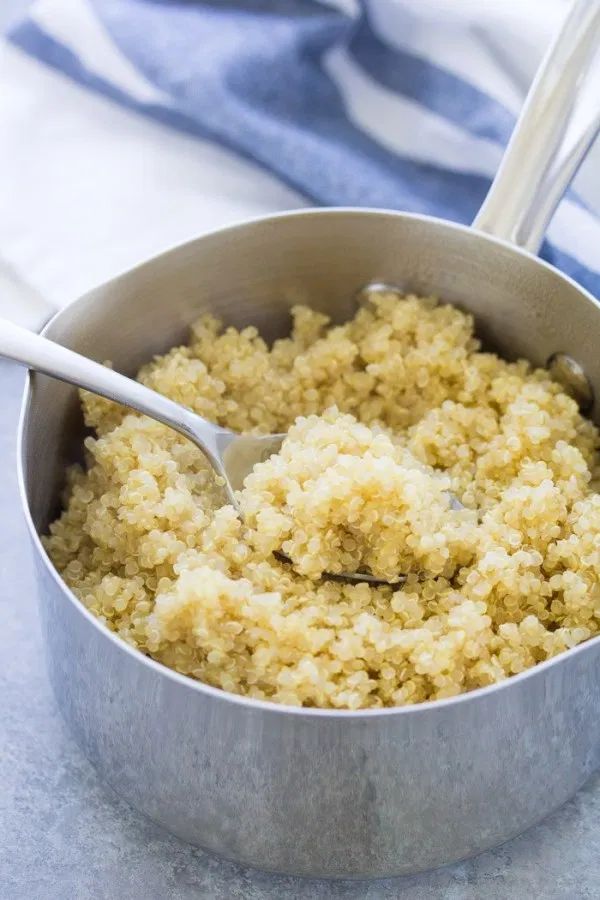
What is quinoa?
Table of Contents:
Quinoa (rice quinoa) is a seed, not a grain as many people think. However, it is used as a grain and can be cooked and served in place of foods such as rice and couscous.
The seeds are tiny and look like millet - or caviar! The most common type of quinoa is ivory, but pink, red, brown, and black varieties can also be found. And the good news is that you can use different shades of quinoa in your recipes.
Quinoa's closest relatives are spinach and chard. The birthplace of this plant is South America, the Andes.
History of Quinoa
Quinoa was the staple food of the Native Americans for thousands of years before the Spanish conquest. This plant has been grown in the Andean regions such as Ecuador, Bolivia, Colombia and Peru, as well as in North America, including the United States. This was before corn and wheat were introduced to America. The name quinoa comes from the Native American language "quinoa" or "cinwa".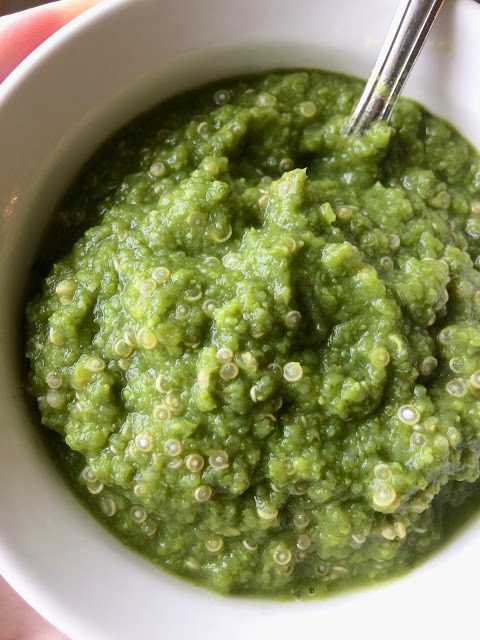
Quinoa grain production was ignored after the Spanish conquest and after the introduction of wheat and corn into these areas. To the indigenous Incas, quinoa was very sacred, and they called it the mother of all grains or "mother grain" and it was believed that its use increased the endurance of warriors.
Good to know!
The Spanish conquerors who came to America in the early 16th century almost destroyed all quinoa. Only a few patches of wild kinoia remain, and for almost 300 years it was almost forgotten. Quinoa has gained popularity in the last few decades. Several studies have shown that quinoa is a wonder grain when compared to wheat, corn, rice, or oats. Technically, quinoa is not a grain, but it is known as a pseudo-cereal.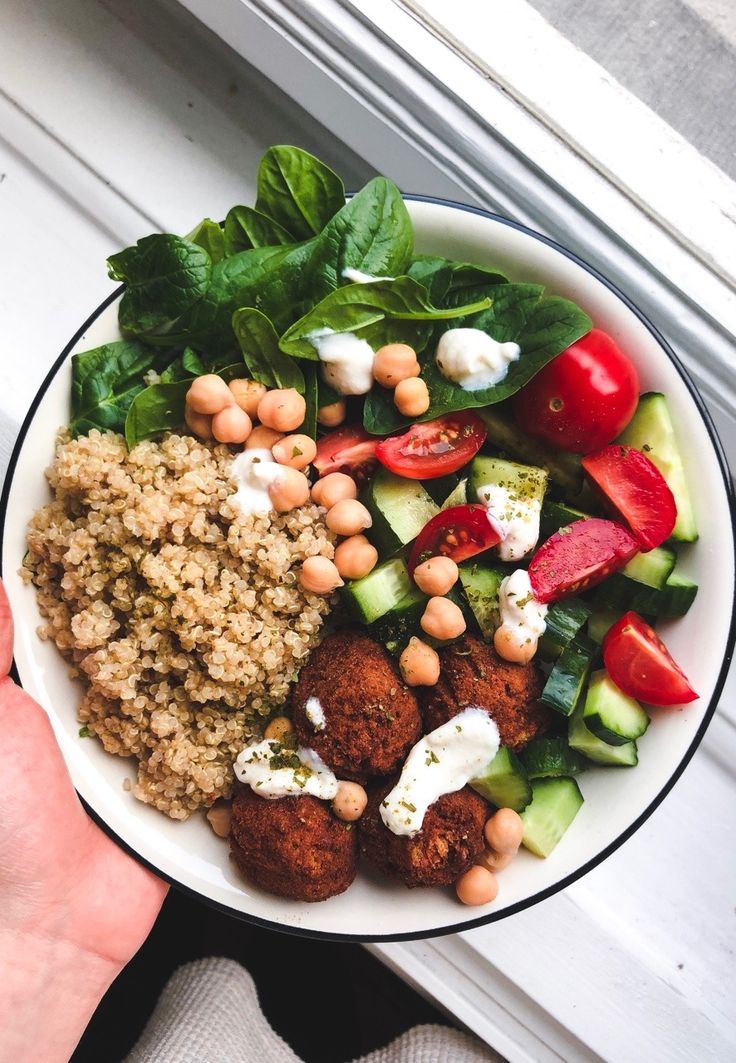 And the law of the places where the product is grown prohibits genetically modifying this grain.
And the law of the places where the product is grown prohibits genetically modifying this grain.
Benefits of Quinoa in baby food
Quinoa is equally beneficial for both baby and adult food. It is filled with fiber, calcium, folic acid, iron, etc. Since a child develops rapidly during the first year of life, it is important and beneficial to offer the necessary vitamins and minerals at this stage, which are found in abundance in quinoa. Here are some of the benefits of adding quinoa to a child's diet:
Protein
Quinoa is an excellent source of protein for children. Protein helps support the growth and development of your baby. Although the protein content is not high in terms of other foods, these proteins contain essential amino acids. These essential amino acids cannot be synthesized by the body and must be obtained from food.
Vitamins
Quinoa is a good source of vitamins such as thiamine, niacin, riboflavin, pantothenic acid, vitamin B-6, folic acid, and vitamin E.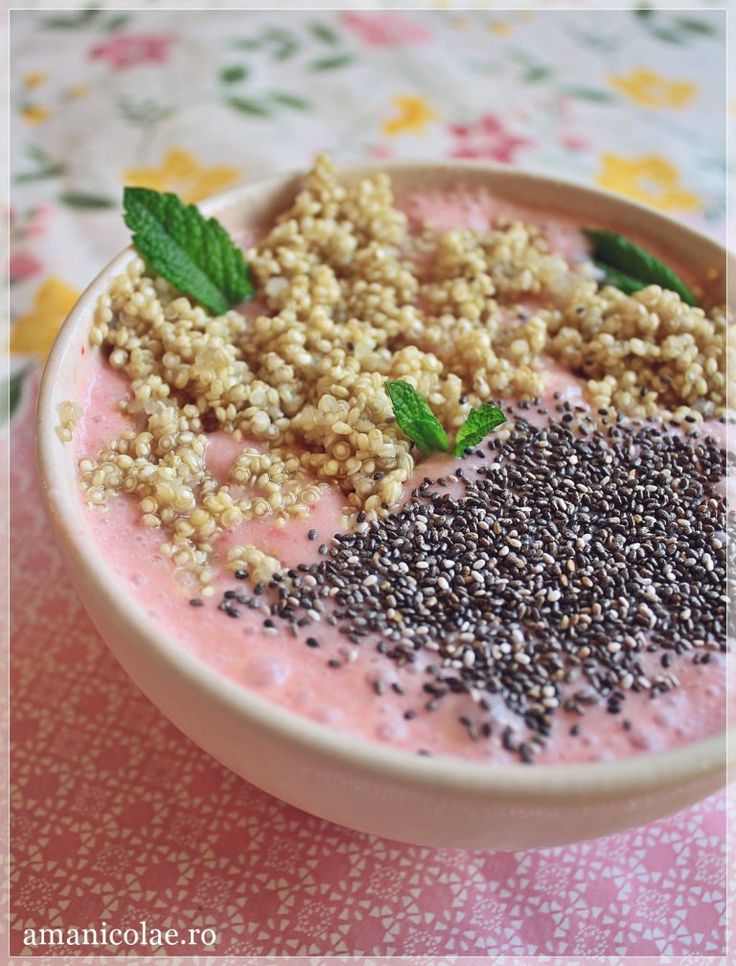 This list is just a few of the essential vitamins for a child's mental and physical development. states.
This list is just a few of the essential vitamins for a child's mental and physical development. states.
Minerals
Quinoa is a good source of calcium, iron, potassium, sodium, magnesium, zinc, phosphorus, etc. A child needs all these minerals for growth:
Antioxidants
Babies need to eat well because they are actively growing during their first year of life.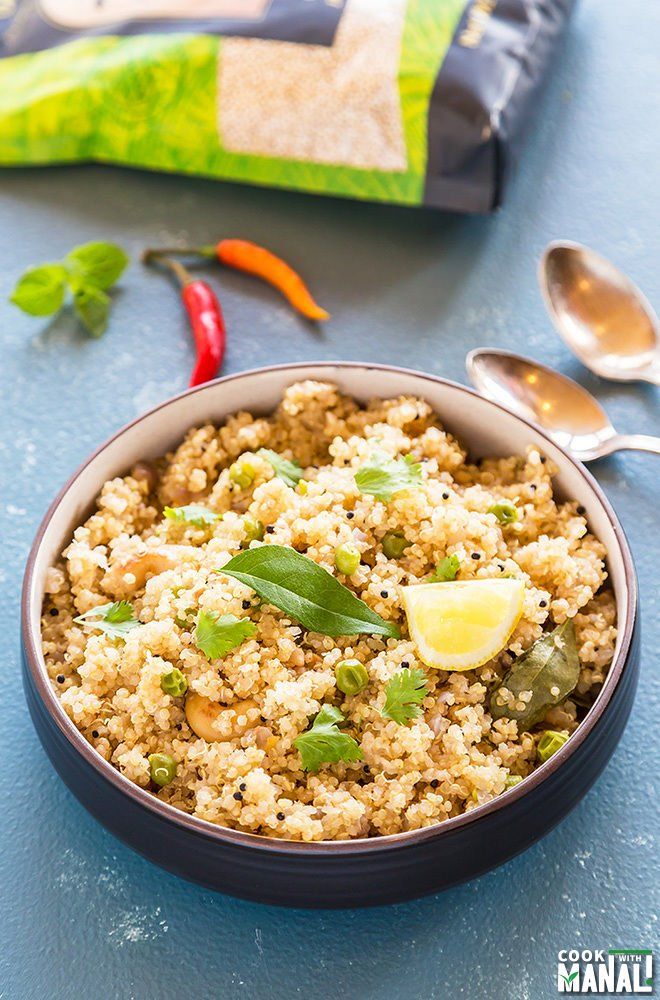 This requires a high metabolism, which can lead to the formation of free radicals in their small bodies. Quinoa comes with antioxidants that can scavenge free radicals in the body and prevent DNA damage. Antioxidants also reduce oxidative stress in the body.
This requires a high metabolism, which can lead to the formation of free radicals in their small bodies. Quinoa comes with antioxidants that can scavenge free radicals in the body and prevent DNA damage. Antioxidants also reduce oxidative stress in the body.
Fiber
The high amount of fiber makes quinoa a good laxative. Adding it to a child's diet can help keep the digestive system healthy. Many moms love quinoa in their baby formula because it prevents excess bloating and constipation. This product helps the child process other foods as well.
Carbohydrates
Quinoa is rich in carbohydrates and has a low glycemic index (GI), resulting in a sustained release of energy for children to play and learn.
The main benefit of quinoa in baby food is that this product does not contain gluten , so for babies who are gluten intolerant, this type of porridge is very diversified in the diet.
In the complementary feeding scheme on the Encyclopedia of Baby Food website, I advise you to introduce quinoa after rice, buckwheat and corn, since I consider these cereals to be the main ones in the child's diet with minimal reactions from the baby's digestive tract.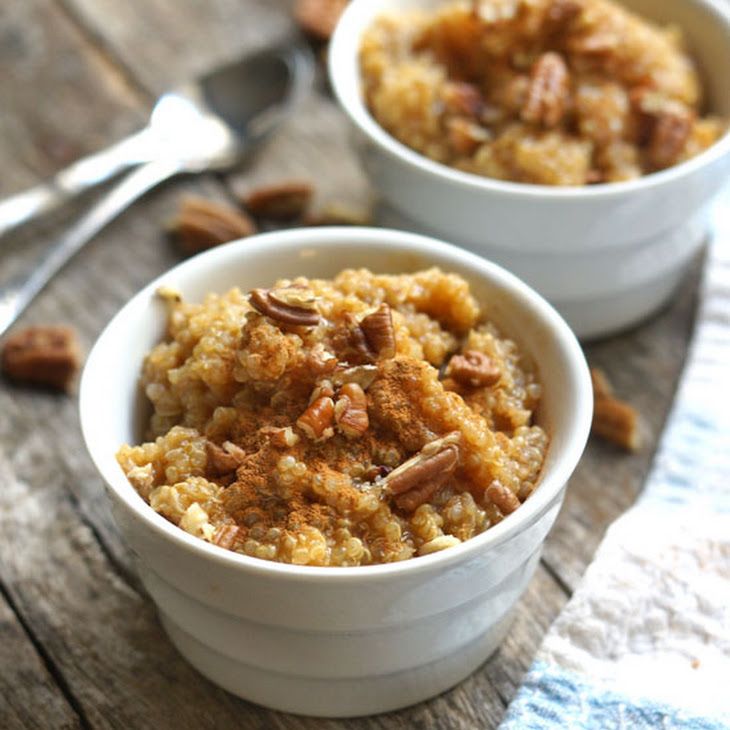
Approximately the age at which quinoa is introduced into a baby's complementary foods is around 7-8 months, depending on the pace at which new foods are being introduced into the diet.
Foreign sources believe that introducing quinoa porridge into baby food should be closer to 8 months. But our Russian sources believe that quinoa is dangerous for children under 2 years of age due to the substance saponin, which irritates the mucous surfaces of the stomach and intestines in young children. Therefore, it is worth balancing the benefits and risks, discussing with the pediatrician about the possibility of introducing quinoa into complementary foods before 2 years of age. Since this grain can completely replace meat if the kids do not eat it well. Also, being gluten-free can play an important role in deciding whether or not to introduce quinoa into complementary foods. All the same, the choice remains with the parents and the well-being of the child himself.
Quinoa Complementary Food
Quinoa Allergy
Quinoa is considered an overseas product, so introducing it into complementary foods must be done with caution in all the rules of expecting a child's reaction to a new product.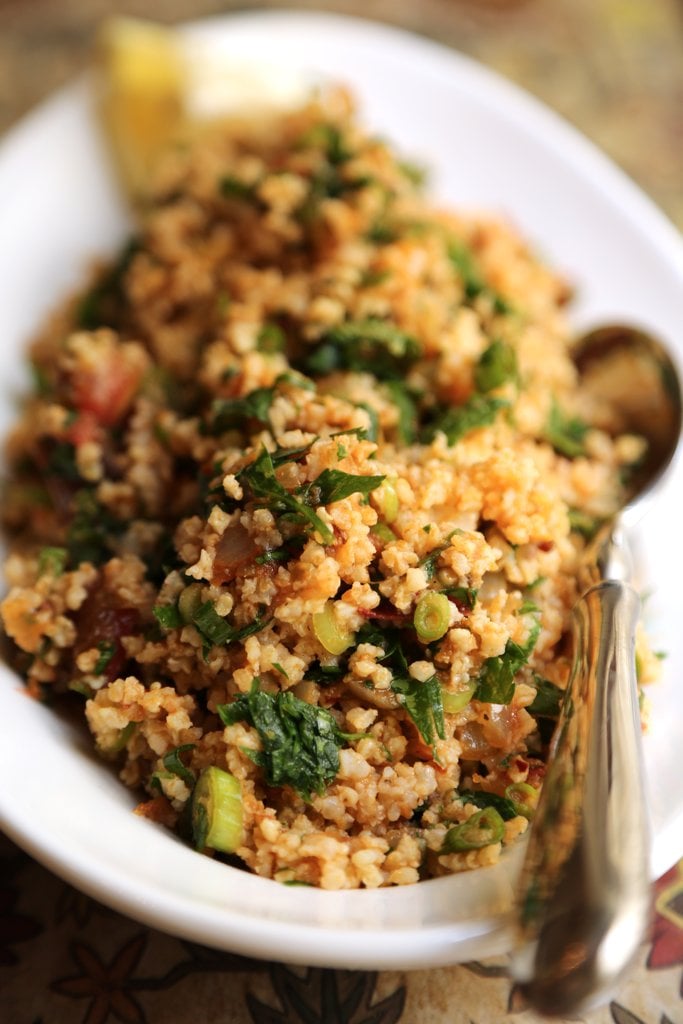
Since quinoa is not a cereal crop, it does not contain gluten, so this “grain” can be classified as a low-allergenic product. In this case, when asking about allergies, we focus on individual intolerance to the product, which can manifest itself as intestinal disorders and a rash on the skin.
Contraindications
Quinoa contains saponins (biologically active substances), which have a toxic effect on the child's body.
High levels of oxalates are dangerous for people suffering from gallstones and kidney disease. And phytic acid prevents calcium absorption.
How to eliminate the harm of quinoa
Of course, any harm can be reduced. Also, do not forget that the product, before getting into the packaging on the store counter, is processed and loses some of its properties.
The most harmful for a child's body is saponin, which belongs to plant glycosides, which are life-threatening only if they are injected into the body intravenously, in all other cases there will be only individual intolerance. For a child younger than 1 year old, saponins are dangerous because the young stomach is not yet strong, the intestinal walls are not fully formed, so saponin can enter the bloodstream, but in small quantities.
For a child younger than 1 year old, saponins are dangerous because the young stomach is not yet strong, the intestinal walls are not fully formed, so saponin can enter the bloodstream, but in small quantities.
To keep the dose of saponins in quinoa to a minimum, it is necessary to buy quinoa in stores, as they sell groats peeled from the outer shell. Since saponin forms the top layer, it is bitter and needs quinoa to repel pests. Remaining saponins can be removed by soaking the cereal in cold water for a long time. Keep in water for about 2-8 hours and then rinse the quinoa thoroughly. The bitterness goes away and only the rice taste remains.
Incidentally, phytic acid is also removed from quinoa by long soaking.
How much quinoa per week?
Based on the above, quinoa should be present in small amounts in baby food. So, for example, only 100 grams of a dry product per day can satisfy the need of an adult body for iron and zinc by a quarter, so an adult can consume quinoa 2-3 times a week.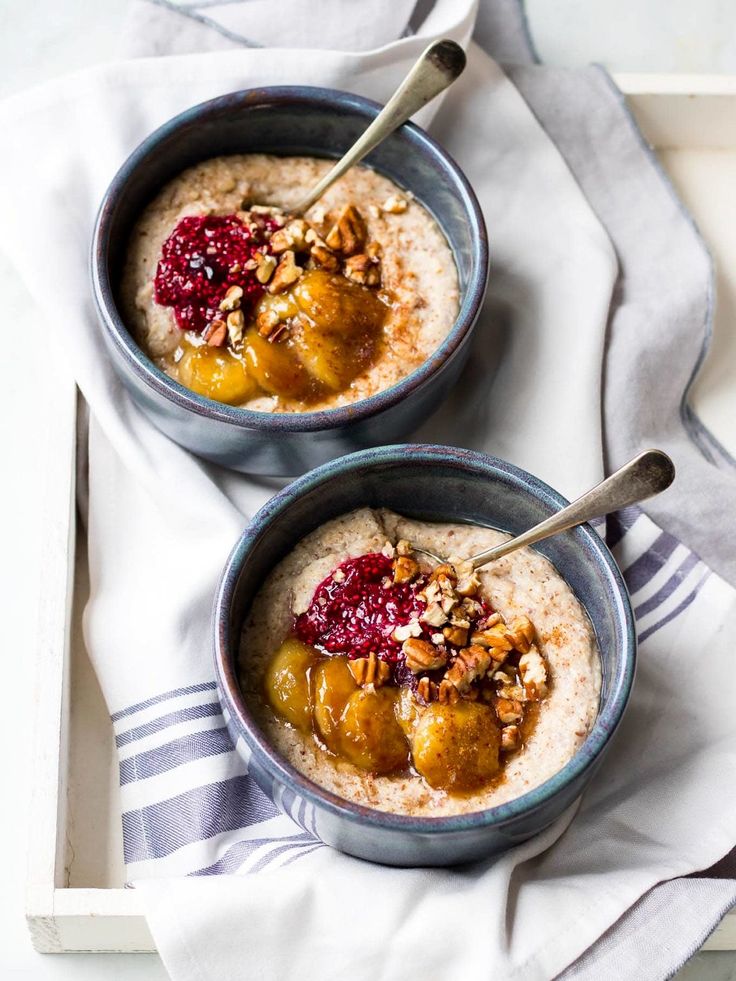 In the children's menu, cereals should be present no more than 1-2 times a week, 100 grams of the finished product at one meal.
In the children's menu, cereals should be present no more than 1-2 times a week, 100 grams of the finished product at one meal.
Although at first it is advised to give no more than 30 grams of quinoa during the first week, so that the baby's stomach gets used to it and only then increase the amount of the product to the prescribed norm in the age variant, but not more than 100 grams per meal. Later, when the cereal is introduced into complementary foods, it can be mixed with vegetables or meat up to the prescribed age norm.
How to give quinoa
Quinoa in baby food is a versatile way to diversify the children's menu. This cereal can be prepared in many ways.
The easiest way is to make quinoa porridge, then beat it with a blender to achieve a smooth consistency in the form of baby puree.
Traditionally, quinoa is used to make porridge, minced meat for cutlets, pilaf, soups, pasta, salads, and you can also make sweet desserts. The taste of cereals is very rich and unusual, a little grassy, with a slight bitterness and a nutty aftertaste, there is sweetness.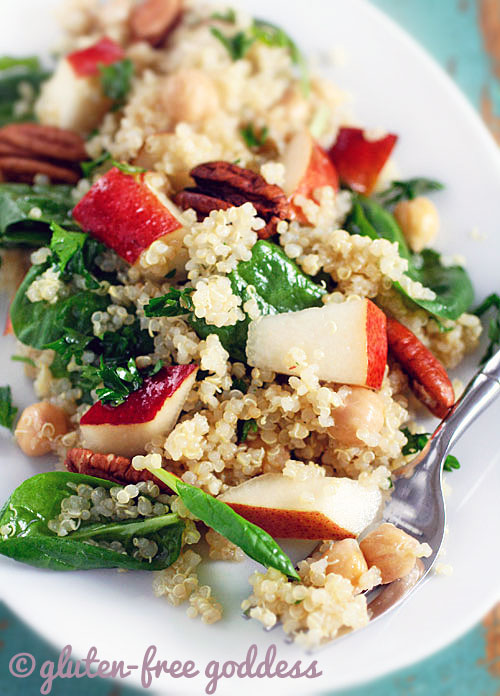 Quinoa is prepared like any cereal crop for 15-20 minutes in boiling water with the addition of spices and salt.
Quinoa is prepared like any cereal crop for 15-20 minutes in boiling water with the addition of spices and salt.
How do I select and store quinoa?
Quinoa used to be available only in health food stores, but today you can increasingly find this cereal in large hypermarkets and ordinary mini-markets at an affordable price. Of course, buckwheat or corn grits can be bought cheaper, but do not forget about the benefits of quinoa in baby food, and also that it can be given 1-2 times a week to saturate the child's body with all the nutrients, so one pack can be enough for 1.5 months , and maybe more if you cook children's soups.
When buying, you need to pay attention to the pack in which the quinoa is sold, it must be whole, not opened, dense. It is best to buy in large hypermarkets, where they monitor the quality of the goods and there is a great demand for quinoa, so that there is at least some guarantee that the cereal is fresh. We also look at the date of manufacture and packaging, again, so that the old rancid cereal does not come across.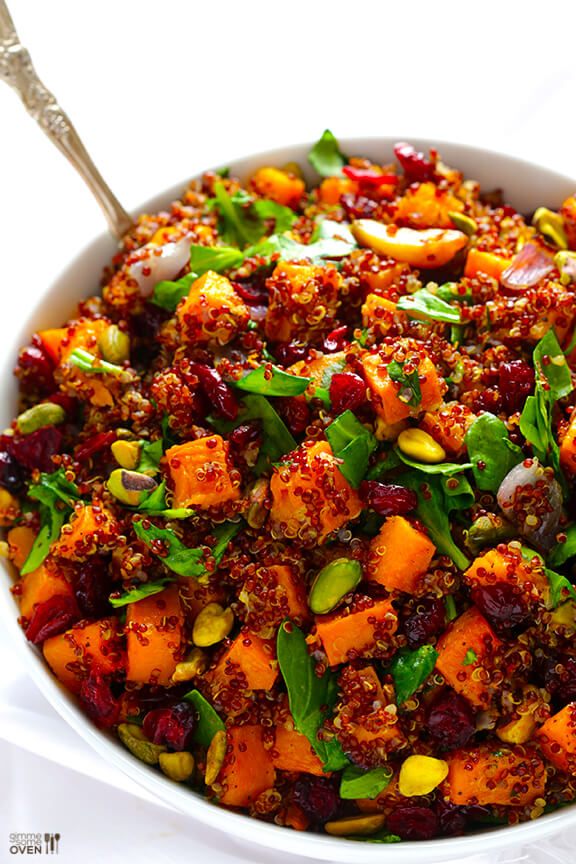
At home, quinoa is best stored for several months in a cool, dry place in an airtight container, preferably in the refrigerator. Refrigeration prevents the natural oils from the grain from turning rancid. If you buy pre-ground grains, then preference should be given to a small amount of the product and use it before the quinoa becomes rancid. It also applies to ground quinoa that you have prepared yourself at home. It is best to grind cereals for one preparation of complementary foods.
Quinoa has a shelf life of one year.
How to make quinoa in baby food
Soak and rinse . Quinoa must be soaked for 2-8 hours before cooking, preferably overnight, and then rinsed thoroughly, especially if it will be cooked for a child. This must be done to rid the cereal of bitterness and saponins. Although most quinoa sold in Russia is pre-washed to reduce bitter saponins. A sieve can be used for washing.
Roasting . If quinoa, after soaking and washing, is slightly fried in a pan, then the seeds can be easier to digest and enhance the taste. Add the required amount to the pan, heat over medium heat, stirring constantly to avoid burning. Once the quinoa turns golden brown, remove from heat.
Add the required amount to the pan, heat over medium heat, stirring constantly to avoid burning. Once the quinoa turns golden brown, remove from heat.
Preparation: Since quinoa can quadruple in size when cooked, like rice, use two to three cups of water per cup of quinoa. After cooking, it is also necessary to thoroughly rinse the boiled quinoa. Groats are considered ready when they become translucent, soft, veined, encircling the seed. Puree the finished quinoa with a blender, add milk or water to achieve a homogeneous consistency and serve to the child on the table.
If making baby puree with quinoa flour, stir 1 cup of quinoa into 2 cups of boiling water using a whisk to avoid lumps. Cook until ready.
Microwave cooking of quinoa is not recommended as the taste will deteriorate significantly.
Freezing Quinoa
Quinoa can be frozen and stored in the refrigerator for up to 3 months. Frozen quinoa in the form of baby puree may become rubbery or gritty when thawed.